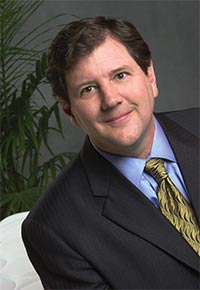About the Natural bed Store
The Land and Sky Natural Story
 Ron Larson, Co-President, tells us how he came to build natural beds.
Ron Larson, Co-President, tells us how he came to build natural beds.
“I first wanted to build a natural bed back in the early 1970s, when we began building waterbeds. I liked that the foundation of the entire bed—water—was natural. Of course that was during a time that the environmental movement was just beginning, with the first Earth Day in the spring of 1970. Back then people never asked us about chemicals used in the beds.
However, even though water was a natural element, many of the other components in our beds were synthetic. 42 years ago we lacked the materials to make an affordable bed from all-natural and certified material. Plus back then we were just beginning sleep research; we knew water was a great surface to sleep on, but we had yet to build our first sleep lab. Throughout the Seventies and into the Eighties we continued to listen to our customers and improve our mattresses.
Back in 1986, a customer first asked me about how the components in our waterbeds interacted with her breathing. That started me to thinking: “There must be a way to build a truly all-natural bed, without the synthetic chemicals.” I still didn’t have access to the materials, but two years later we established our own sleep lab and really began monitoring the human process of sleep
Around 1995 we finally completed our first natural bed. The arrival of natural latex made that possible. Plus by then we’d completed nearly a decade of sleep research on a variety of different surfaces. Making that first all-natural mattress was exciting; and the people we sold it to still use it, but it just wasn’t quite good enough to put our name on it yet. Years ago my brother and I made a pact never to go to market with a second-rate product.
So we didn’t. Instead, we began what turned into a years-long search for trusted vendors to supply us with the basic four elements we’d need for an all-natural bed: wood, 100% Pure Wool, cotton and Eco-Fresh latex. At first I was discouraged—so many vendors tried to pass off their products as natural that really weren’t. But we soon learned to ask many questions and buy materials in small quantities. We started testing materials under our simulated “stress-tests” in the sleep lab, and gathering data from our sleep participants.
We knew that latex had been successfully used in beds way back in the 50s, so there was a commercial precedent in the US. But fifty years ago the latex was synthetic, not natural. So in a way we were going back to basics, but with better, all-natural materials. From 1995 to 2000 we continued our search for the right blend of natural latex, coupled with the best balance of firmness and support.





